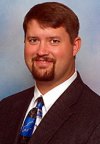Conventional Exercise Does Not Correct Scoliosis

With the risks, costs, and lack of long-term correction associated with scoliosis surgery, more and more people are looking into alternative treatments for scoliosis. Exercise approaches to scoliosis are a logical alternative step in this process. However, the types of scoliosis exercise treatment available are widely varied. For example, there are exercise treatments that heavily focus on a patient’s breathing mechanics and function. Other exercise protocols utilize mirror image-type exercise to straighten the scoliosis, while still others focus on performing normal activities of daily living with specific anti-scoliosis postures to promote scoliosis correction.
In my opinion, all exercise-based scoliosis therapies deserve some merit simply based on the fact that they are not surgery. Genetic risk stratification tells us that only 1% of all adolescents with idiopathic scoliosis will see their scoliosis progress to a point where surgery would be recommended. Unfortunately, scoliosis surgery is performed much more frequently than that. Exercise-based therapies also deserve credit for trying to identify other outcome goals that are important to most patients, things like quality of life, pain level, and visual appearance, rather than simply measuring a scoliosis on an x-ray.
When we specifically look at exercise-based therapies, however, we need to consider the types of exercises specifically employed in each method. For example, in a general sense, exercises can be classified as one of two types: voluntary or involuntary. Voluntary exercises include any exercise where the person voluntarily moves a part of his or her body actively to achieve a goal (i.e. run a certain distance, lift a weight, do a pushup, jump a certain height, etc.). Involuntary exercises are those where the body automatically moves or functions in direct proportion to a specific stimulus (i.e. carrying a purse, sitting on a wallet, carrying a briefcase, wearing glasses, etc.)
Most of the medical literature on exercise-based therapies are testing the voluntary type of scoliosis exercise to see if they will help reduce scoliosis. These studies have been largely unexciting because the changes are not overly dramatic. However, there are very good reasons for this. First, neurologically speaking, we humans are creatures of habit. We tend to sleep on the same side of the bed, eat at the same spot at the dinner table, take the same route to work, go to bed at about the same time, and so on. The reason these example tasks are habit is because they have been done repeatedly enough to become an automated habit in our brains. It is estimated that it takes a minimum of 3500 repetitions of a specific activity before it becomes an automatic habit. Therefore, if we performed voluntary corrective scoliosis exercises even as much as three times a day every day, it would take almost 3 years of performing these exercises three times daily before these exercises became automated habits.
The reason this is important is because posture control is also an automated, involuntary habit. We don’t have to think about standing up and resisting gravity, we simply do it. This became automated when we were infants and began trying to stand up. We performed many, many standing repetitions every day until we could stand, and then the more repetitively we stood, the better we became and eventually we didn’t have to focus so hard on trying to stand up. It became automatic. But since posture is primarily an involuntary process, doesn’t it make sense to use involuntary exercises to try to help improve posture, and hence scoliosis?
Early Stage Scoliosis Intervention and Scoliosis BootCamp programs specialized the exercises that are involuntary. These exercises cause the body to immediately create an automatic change, and therefore can create a postural habit much more quickly, often as early as 90 days. Why do voluntary exercises that accomplish in 3 years what involuntary exercises can do almost immediately? In fact, several published studies have already proven this point. The heart of this issue is that most physicians are not trained to create treatment plans utilizing involuntary exercises. That is why I would recommend seeing a doctor affiliated with the International Chiropractic Scoliosis Board, a group dedicated to the rehabilitation of scoliosis through scientifically advanced involuntary exercises (sometimes called neuromuscular re-education) and extensive home care training learned in the bootcamp style setting.
Blogs
- The Chiropractic Cartel: A Look Back at Bias in Accreditation and its Imact on Today's Profession
- Inside Montana's Chiropractic Monopoly: ACA & MCA's Brazen Board Takeover
- Concerns Grow About Control of the NY State Chiropractic Board by the ACA - Use of X-ray in NY Under Threat
- Reproductive Health Information and Chiropractic Care: Navigating New Privacy Regulations
- Navigating Substance Use Disorder (SUD) Consent: What Chiropractors Need to Know














